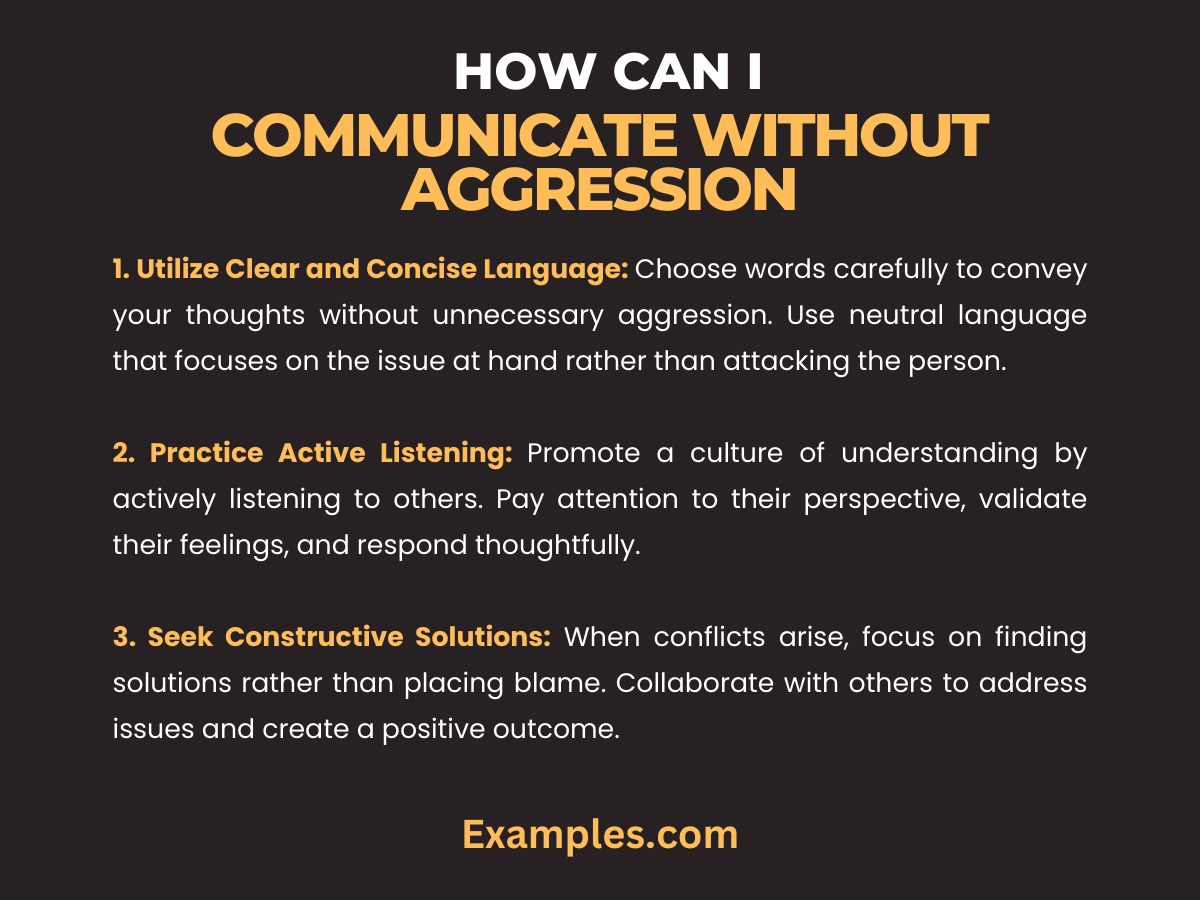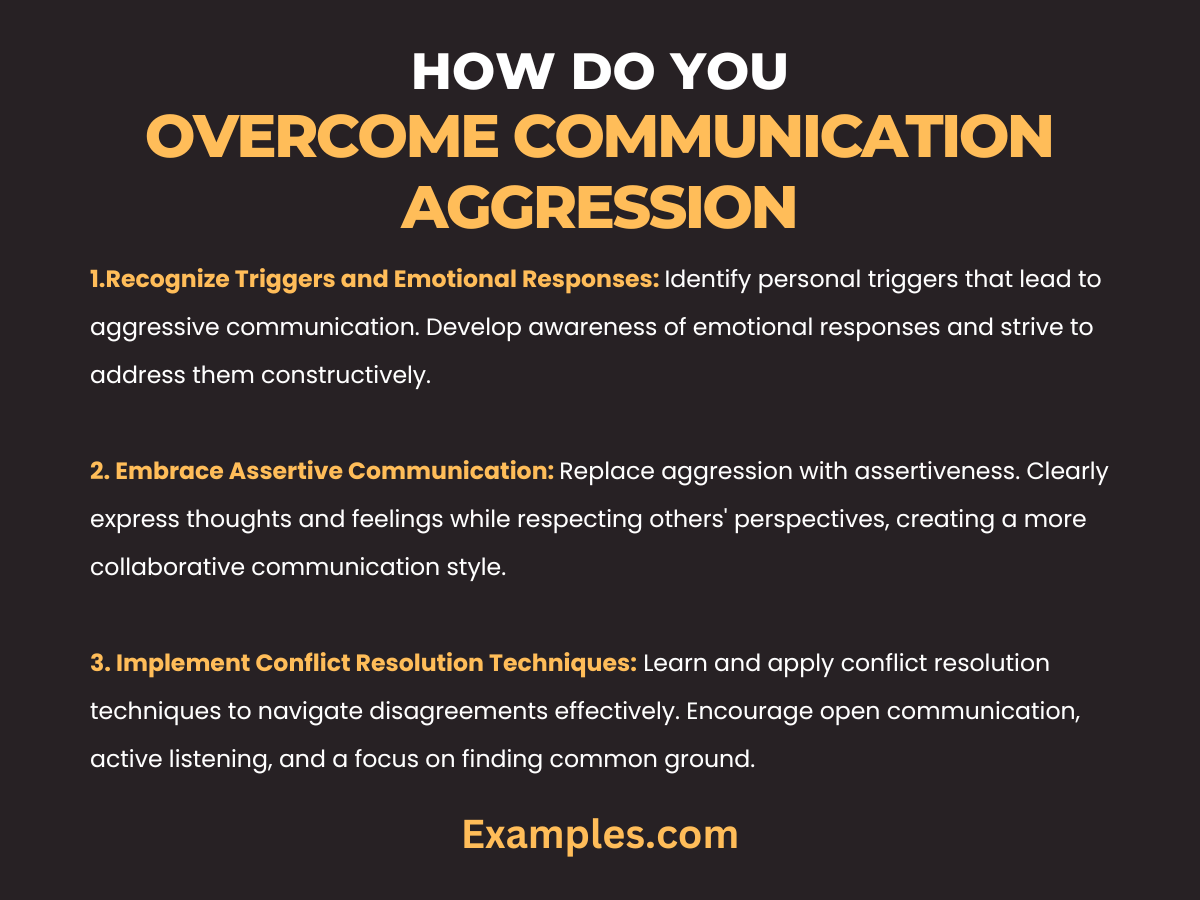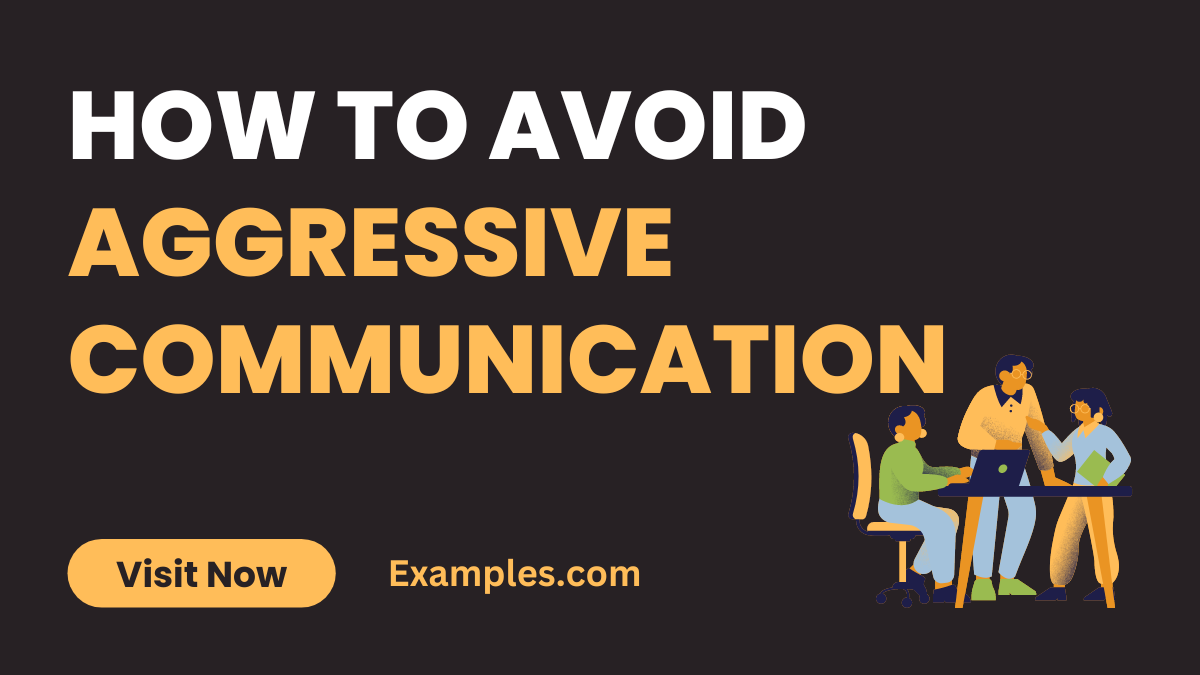How to Avoid Aggressive Communication?
Unlock the secrets of fostering harmonious interactions with our in-depth guide on how to avoid aggressive communication. Delve into practical strategies, expert tips, and relatable communication examples that empower you to navigate conversations assertively, yet respectfully. Whether at home or in the workplace, this guide provides transformative insights, helping you cultivate a positive and effective communication style that builds stronger connections and resolves conflicts with grace.
How Can I Communicate Without Aggression?
Mastering non-aggressive communication is a crucial skill for positive interactions. Learn to express yourself assertively without resorting to aggression. This guide explores practical tips, examples, and effective strategies to foster respectful communication, whether in personal relationships or professional settings.

- Utilize Clear and Concise Language
Choose words carefully to convey your thoughts without unnecessary aggression. Use neutral language that focuses on the issue at hand rather than attacking the person.
Instead of saying, “You always mess things up,” try, “I’ve noticed some errors; let’s discuss how we can improve.” - Practice Active Listening
Promote a culture of understanding by actively listening to others. Pay attention to their perspective, validate their feelings, and respond thoughtfully.
Instead of interrupting, listen fully before responding. Say, “I hear your concerns, and I appreciate your perspective.” - Seek Constructive Solutions
When conflicts arise, focus on finding solutions rather than placing blame. Collaborate with others to address issues and create a positive outcome.
Instead of saying, “This is all your fault,” suggest, “Let’s work together to find a solution that benefits everyone.”
How Do You Overcome Communication Aggression?
Overcoming communication aggression requires self-awareness and intentional efforts. This guide provides insights, techniques, and actionable steps to break free from aggressive communication patterns, fostering healthier and more productive interactions.

- Recognize Triggers and Emotional Responses
Identify personal triggers that lead to aggressive communication. Develop awareness of emotional responses and strive to address them constructively.
Instead of reacting impulsively, take a moment to recognize anger or frustration. Say, “I need a moment to collect my thoughts before responding.” - Embrace Assertive Communication
Replace aggression with assertiveness. Clearly express thoughts and feelings while respecting others’ perspectives, creating a more collaborative communication style.
Instead of shouting demands, express your needs assertively. Say, “I would appreciate it if we could discuss this matter calmly.” - Implement Conflict Resolution Techniques
Learn and apply conflict resolution techniques to navigate disagreements effectively. Encourage open communication, active listening, and a focus on finding common ground.
Instead of escalating conflicts, initiate a calm discussion. Say, “Let’s talk through our differences and find a resolution that works for both of us.”
How Do You Set Boundaries with an Aggressive Communicator?
Establishing boundaries with an aggressive communicator is crucial for maintaining healthy relationships. In this comprehensive guide, discover effective strategies for asserting your limits, fostering respect, and creating a communication environment that promotes understanding and collaboration.
- Identify and Articulate Your Limits
Begin by recognizing the specific behaviours that make communication uncomfortable. Clearly define what you find unacceptable, providing a foundation for setting boundaries. - Communicate Assertively
Express your boundaries with confidence and clarity. Use “I” statements to convey your feelings and needs, emphasizing assertiveness without aggression. - Consistency is Key
Consistently uphold your boundaries, reinforcing their importance. Be firm in maintaining your limits while remaining open to constructive dialogue. - Seek Support When Needed
If faced with persistent challenges, seek support from a trusted friend, colleague, or professional mediator. External perspectives can provide valuable insights and assistance.
What to Do If You’re an Aggressive Communicator
Recognizing and addressing aggressive communication traits is a transformative journey. This guide offers actionable steps for individuals looking to change their communication style, fostering healthier interactions.
- Acknowledge Aggressive Behaviour
Self-awareness is the first step. Acknowledge and reflect on instances where your communication may have been aggressive. Honest self-evaluation is crucial. - Understand Triggers
Identify triggers that lead to aggressive communication. Whether stress, frustration, or other factors, understanding these triggers empowers you to manage them effectively. - Learn and Practice Active Listening
Developing active listening skills is key to avoiding aggression. Focus on understanding others’ perspectives before responding, fostering empathy and connection. - Implement Stress-Management Techniques
Explore stress-management techniques like deep breathing, mindfulness, or exercise. Managing stress positively reduces the likelihood of resorting to aggressive communication. - Seek Professional Help if Necessary
If aggressive communication habits persist, consider seeking professional assistance, such as counselling or communication training programs. Professionals can provide tailored guidance for personal growth. - Commit to Continuous Improvement
Changing communication habits takes time. Commit to ongoing self-improvement, celebrating successes, and learning from setbacks. Embrace the journey toward more positive and constructive communication.
In conclusion, mastering the art of avoiding aggressive communication is pivotal for nurturing positive relationships. This comprehensive guide, enriched with practical examples, empowers individuals to set boundaries assertively and transform communication dynamics. Whether seeking to avoid aggression or navigate interactions with assertiveness, this guide provides valuable insights for fostering a communication style that promotes understanding, collaboration, and harmony.



